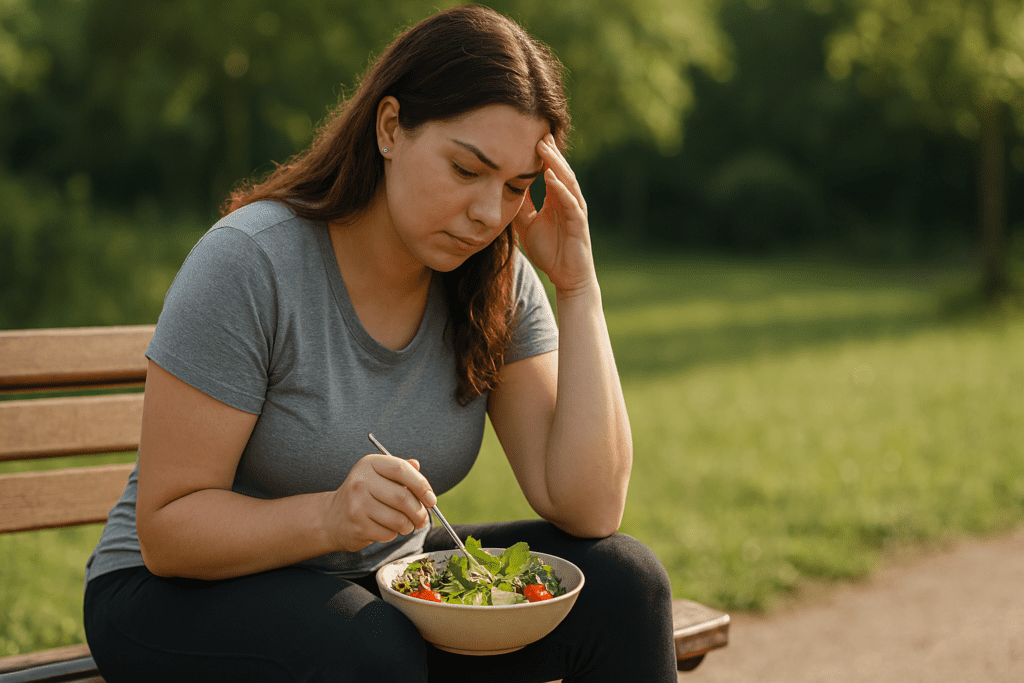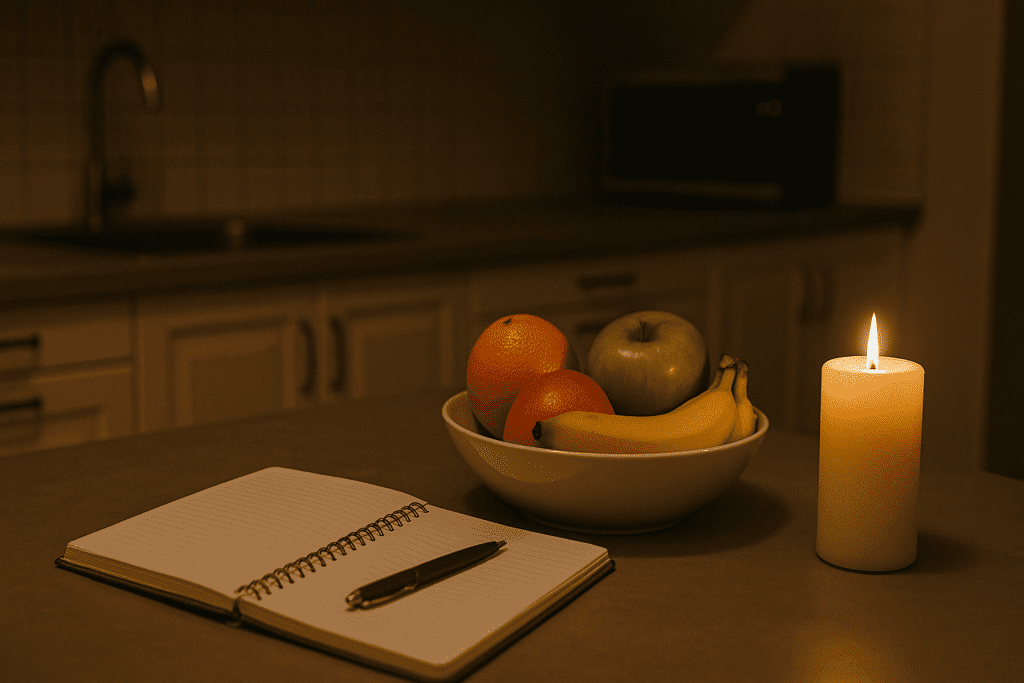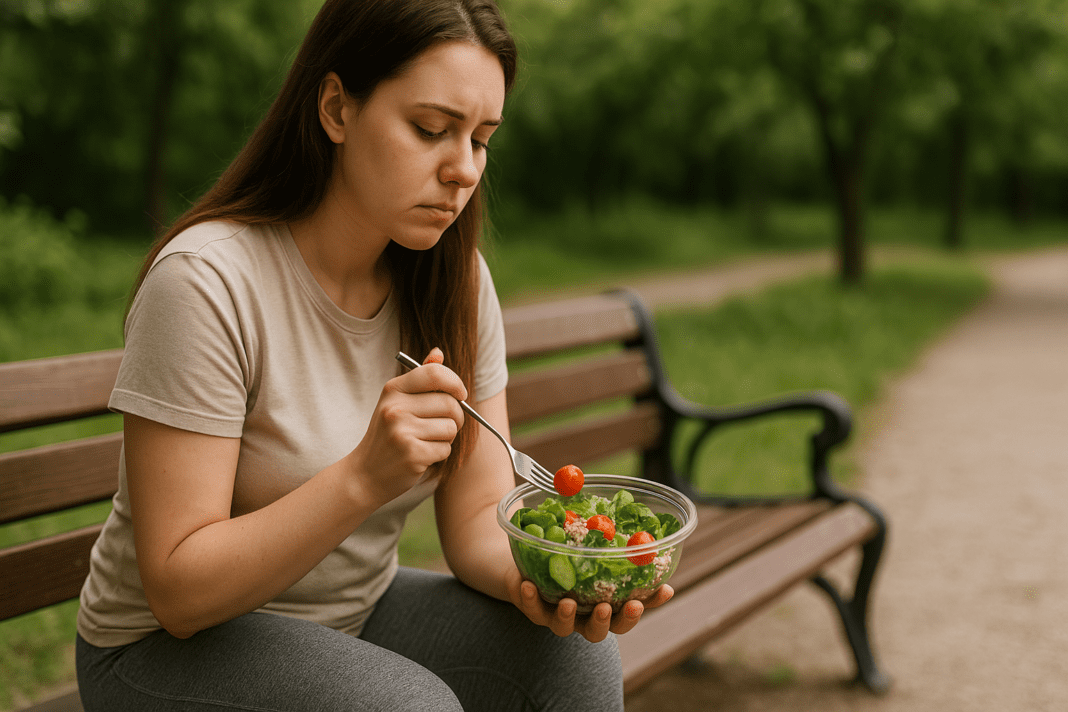When it comes to sustainable weight loss, the most transformative changes often begin with what’s on your plate. Yet, in a world flooded with fad diets and conflicting nutritional advice, knowing where to start can feel overwhelming. What’s needed isn’t just another short-lived eating trend, but a practical approach rooted in real science—one that combines healthy food ideas for weight loss with ease, satiety, and affordability. These three pillars—nutritional balance, satisfying meals, and cost-effectiveness—form the cornerstone of sustainable change, especially when paired with expert insights on how to structure meals for long-term success.
Healthy weight loss doesn’t have to be restrictive or dull. In fact, the best meals for losing weight are those that nourish the body, satisfy hunger, and align with your lifestyle and budget. Instead of chasing low-calorie gimmicks, this article presents a fresh, evidence-based perspective on crafting meals that support fat loss without sacrificing flavor or your wallet. Whether you’re seeking weight loss recipes for breakfast, lunch, and dinner, or looking to understand how to prepare easy filling meals for weight loss that align with a busy schedule, this comprehensive guide delivers practical, expert-backed advice tailored for real life.
You may also like: Smart, Simple Recipes for a Balanced Diet: Expert-Backed Healthy Food Dishes to Support Everyday Wellness
Why Weight Loss Starts with What You Eat—and How You Eat It
The foundation of effective fat loss is a consistent calorie deficit achieved through nutrition that supports metabolic health and minimizes hunger. However, the quality of those calories matters just as much as the quantity. Choosing good meals for weight loss means prioritizing whole, nutrient-dense ingredients that regulate blood sugar, support lean muscle mass, and foster long-term adherence.
Refined carbohydrates, added sugars, and ultra-processed foods can easily derail progress—not simply due to their caloric content, but because they fail to satiate and often lead to overeating. In contrast, meals that emphasize high-fiber vegetables, lean proteins, and healthy fats help maintain satiety and stabilize energy levels. That’s why many experts recommend adopting an eat clean, lose weight recipes approach that emphasizes minimally processed ingredients and home cooking.
Yet for many people, the idea of healthy cooking brings to mind expensive ingredients or hours in the kitchen. Fortunately, cheap meals for losing weight don’t require gourmet techniques or boutique health foods. With a bit of planning and creativity, it’s entirely possible to eat well, feel full, and shed excess weight—all while keeping your food costs in check.

Building Blocks of a Healthy, Fat-Burning Plate
Creating meal ideas for fat loss begins with understanding the basic structure of a balanced meal. Every plate should include four essential components: protein, fiber, healthy fats, and slow-digesting carbohydrates. Each plays a distinct role in satiety, metabolism, and nutrient absorption.
Protein is crucial for preserving lean muscle mass during weight loss and enhancing thermogenesis (the energy cost of digestion). Fiber from vegetables, legumes, and whole grains slows digestion, balances blood sugar, and keeps you full longer. Healthy fats from sources like avocados, nuts, and seeds not only contribute to fullness but also support hormone function. Complex carbs like quinoa, brown rice, and sweet potatoes provide sustained energy without causing sugar spikes.
A thoughtfully composed plate that includes these elements is not only satisfying but also naturally conducive to calorie control. These healthy weight loss recipes reduce the need for constant snacking and prevent the energy crashes often associated with low-quality meals.

Easy Filling Meals for Weight Loss That Fit Your Life
One of the most important predictors of long-term weight loss success is adherence. That means the meals you choose need to fit your preferences, schedule, and lifestyle. Fortunately, easy filling meals for weight loss can be both simple and satisfying without relying on elaborate prep or obscure ingredients.
For breakfast, overnight oats with chia seeds, berries, and a spoonful of nut butter offer a high-fiber, high-protein meal that takes five minutes to prep. Greek yogurt parfaits layered with fruit and homemade granola can be prepared in bulk and provide a balanced mix of macros to keep hunger at bay. These types of healthy recipe ideas for weight loss are ideal for busy mornings and don’t compromise flavor or fullness.
Lunch might include a quinoa and chickpea salad loaded with roasted vegetables, or a wrap made with whole grain tortillas, hummus, grilled chicken, and mixed greens. These meals for cutting weight deliver on both convenience and nutrition, providing the fiber and protein necessary to avoid afternoon energy dips and cravings.
Dinner can remain simple with stir-fried tofu or shrimp and a medley of frozen vegetables tossed in a sesame-ginger sauce, served over cauliflower rice. This not only satisfies the desire for a warm, comforting meal but does so without the calorie overload of traditional takeout. The key is to make meals feel indulgent and flavorful while staying aligned with your goals.

Healthy Eating Ideas to Lose Weight on a Budget
One of the most persistent myths about healthy eating is that it’s inherently expensive. But in reality, some of the most nutrient-dense foods—beans, lentils, oats, brown rice, and frozen vegetables—are among the most affordable. Strategic meal planning and smart grocery shopping can yield cheap meals for losing weight that taste great and nourish the body.
Shopping with a list, buying in bulk, and taking advantage of seasonal produce are practical ways to stretch your food dollars. Planning meals in advance not only reduces waste but also increases the likelihood of sticking to a healthy routine. Leftovers can be repurposed creatively, turning last night’s roasted vegetables into today’s grain bowl or soup.
By building meals around a few versatile staples, it becomes easier to create a variety of healthy food ideas to lose weight that don’t require buying new ingredients each week. A single bag of brown rice, for instance, can serve as the base for burrito bowls, stir-fries, and Mediterranean-inspired salads, making it a star ingredient in any budget-friendly meal plan.
What Are the Healthiest Meals for Losing Weight?
While there is no one-size-fits-all answer to this question, the healthiest meals for losing weight typically share several characteristics: they are high in nutrients, moderate in calories, low in added sugars, and rich in whole-food ingredients. Meals that prioritize plant-forward ingredients, healthy fats, and lean proteins have been shown to support cardiovascular health, improve satiety, and enhance metabolic function.
For example, a lentil and vegetable stew with a side of whole-grain bread delivers protein, fiber, and slow-digesting carbohydrates in one comforting dish. Grilled salmon with roasted sweet potatoes and asparagus provides omega-3 fats, antioxidants, and ample nutrition without excess calories. These meals exemplify healthy food ideas for weight loss that don’t feel restrictive or boring.
Importantly, the healthiest meals are those that promote a healthy relationship with food. They allow for variety, enjoyment, and flexibility—qualities essential for long-term adherence and overall wellbeing.
Creating Weight Loss Recipes for Breakfast, Lunch, and Dinner
A well-rounded daily meal plan should include nourishing options at every eating occasion. That’s why weight loss recipes for breakfast, lunch, and dinner should not only meet nutritional needs but also fit your personal taste preferences and lifestyle demands.
Breakfast should prioritize protein and fiber to help curb appetite throughout the day. A veggie-packed tofu scramble with whole grain toast and avocado is both hearty and energizing. Smoothies made with unsweetened almond milk, spinach, banana, and protein powder offer a quick and portable option that still hits key macronutrient targets.
For lunch, grain bowls assembled with brown rice or farro, black beans, corn, avocado, and a squeeze of lime offer vibrant flavor and balanced nutrition. These types of meal ideas for fat loss are easily customized based on what’s in your pantry or fridge, making them both practical and adaptable.
Dinner can remain light yet satisfying by focusing on vegetable-heavy meals with moderate protein. A zucchini noodle dish with marinara and lentil meatballs, or baked cod with roasted Brussels sprouts and barley, can serve as foundational low fat meals for weight loss that nourish without excess.
Why Satiety Matters: Filling Meals for Weight Loss That Satisfy
One of the most underestimated factors in successful fat loss is satiety—the feeling of fullness and satisfaction after eating. Hunger is a powerful biological driver, and any eating plan that fails to address it is unlikely to succeed long term. That’s why filling meals for weight loss are essential.
Meals rich in fiber and protein slow digestion and send fullness signals to the brain, reducing the urge to snack between meals. Choosing whole grains over refined ones, and incorporating legumes and vegetables into every meal, can make a dramatic difference in how long you feel satisfied. Healthy fats also play a role in extending satiety and improving the palatability of meals.
A black bean chili topped with avocado and served with a side of whole grain toast is a prime example of a healthy recipe idea for weight loss that doesn’t leave you hungry an hour later. By focusing on meals that both satisfy and fuel the body, you naturally reduce cravings and make it easier to maintain a calorie deficit.
Basic Meals to Lose Weight Without the Fuss
Simplicity is often the key to consistency. Many people assume that effective fat loss requires complex meal prep or extensive tracking, but often basic meals to lose weight are the most effective. Think of combinations like grilled chicken, quinoa, and steamed broccoli; baked sweet potato with black beans and salsa; or even a classic tuna salad on whole grain bread with a side of sliced cucumbers.
The beauty of basic meals is that they eliminate decision fatigue and make it easier to stay on track. When you rely on a rotation of tried-and-true meals, you save time, reduce waste, and avoid the temptation to order takeout. These meals are also easily batch-cooked, allowing for healthy leftovers and consistent eating throughout the week.
While variety is important for micronutrient intake and culinary enjoyment, rotating through a few favorite healthy weight loss recipes can simplify your approach and make the process feel less daunting.
Making Low Fat Meals for Weight Loss That Still Taste Delicious
There’s a common misconception that low-fat meals are bland or unsatisfying. But when done right, low fat meals for weight loss can be deeply flavorful and enjoyable. The key lies in using herbs, spices, acid (like citrus or vinegar), and umami-rich ingredients like mushrooms, tomatoes, or fermented foods to boost taste without excess oil or dairy.
A stir-fry made with tempeh, bok choy, bell peppers, garlic, and ginger can be sautéed in a splash of low-sodium soy sauce and finished with a drizzle of sesame oil for flavor. A chickpea and cucumber salad dressed with lemon juice, parsley, and tahini brings brightness and complexity without relying on high-fat ingredients.
By focusing on natural flavors and culinary techniques—like roasting, grilling, or sautéing—you can prepare healthy food ideas to lose weight that are as delicious as they are nutritious.
Frequently Asked Questions: Healthy Food Ideas for Weight Loss
1. How can I stay consistent with healthy eating ideas to lose weight when I have a hectic schedule?
Consistency often comes down to reducing decision fatigue and making healthy choices automatic. Creating a weekly rotation of basic meals to lose weight—like grain bowls, stir-fries, and protein-rich wraps—helps eliminate daily guesswork. You can also batch-cook elements like roasted vegetables, quinoa, and grilled tofu on weekends to assemble quick meals later. By keeping versatile ingredients on hand, it becomes easier to adapt your healthy eating ideas to lose weight even during chaotic weeks. The key is creating a structure that simplifies meal prep while allowing variety, making healthy food ideas for weight loss both realistic and repeatable.
2. What are some good meals for weight loss that won’t leave me feeling hungry an hour later?
The best meals for losing weight emphasize fiber, protein, and water-rich foods, all of which contribute to satiety. For example, a lentil soup with whole-grain toast or a tempeh stir-fry over brown rice provides substantial bulk and slows digestion. Adding healthy fats—like avocado or tahini—can further enhance the filling effect without going overboard on calories. These types of filling meals for weight loss keep you nourished and satisfied, helping reduce mindless snacking. To truly feel full, prioritize easy filling meals for weight loss that combine textures and flavors in a satisfying way.
3. Are there any cultural or international cuisines that naturally align with healthy weight loss recipes?
Absolutely. Many traditional cuisines—such as Mediterranean, Japanese, and South Indian—feature inherently balanced meal structures with a focus on plant-based foods, legumes, and whole grains. For instance, a Mediterranean plate with hummus, tabbouleh, roasted vegetables, and grilled fish fits perfectly within healthy weight loss recipes. These cuisines also often emphasize mindful eating, smaller portions, and fresh herbs and spices over processed sauces. Exploring global culinary traditions can introduce new meal ideas for fat loss while preventing taste fatigue. Plus, many international dishes make excellent low fat meals for weight loss without compromising flavor or tradition.
4. How do I handle social situations or eating out when following healthy food ideas for weight loss?
Navigating social eating is easier with a flexible mindset and a few go-to strategies. Look for menu items that include lean proteins and vegetables, and request simple modifications like dressing on the side or swapping fries for salad. Restaurants that offer customizable bowls or wraps can make it easier to construct good meals for weight loss on the fly. Planning ahead—such as checking menus online—also gives you more control over your choices. By practicing balance rather than restriction, you can enjoy your time out without derailing your commitment to healthy food ideas to lose weight.
5. What are some affordable ingredients that support healthy weight loss without sacrificing nutrients?
Lentils, oats, frozen vegetables, canned beans, and brown rice are not only affordable but also rich in fiber, protein, and essential micronutrients. These ingredients form the base of many cheap meals for losing weight that support metabolism and digestive health. For example, a lentil and vegetable stew or a black bean and corn salad offers excellent nutrition at a low cost. Incorporating these items into your meal plan ensures you’re getting the most value for your budget. When combined with herbs, spices, and seasonal produce, they become flavorful healthy recipe ideas for weight loss with minimal expense.
6. Can I use frozen or canned foods in my weight loss recipes without compromising quality?
Yes—frozen and canned foods can absolutely be part of eat clean lose weight recipes if selected mindfully. Look for canned beans with no added salt and frozen vegetables without sauces or additives. These options are often harvested at peak ripeness and retain their nutrients well, making them excellent stand-ins when fresh produce isn’t available or affordable. Using frozen spinach in a smoothie or canned chickpeas in a salad can help round out weight loss recipes for breakfast, lunch, and dinner quickly and conveniently. Ultimately, it’s how you prepare and combine these ingredients that determines the nutritional value of your meals.
7. How can I use psychology to stick with low fat meals for weight loss over the long term?
Behavioral psychology offers many tools to improve dietary habits. One approach is habit-stacking—pairing meal prep with an existing habit like listening to a podcast or brewing coffee. Visual cues like placing a bowl of fruit on the counter or pre-chopping vegetables can encourage healthier choices. Creating positive associations with low fat meals for weight loss—by enjoying them with friends or celebrating small milestones—also boosts motivation. When meals are pleasurable and aligned with your values, the likelihood of long-term adherence improves. This mindset shift supports lasting change more effectively than willpower alone.
8. Are smoothies or shakes good options for meal ideas for fat loss?
When done right, smoothies can be a fantastic option for busy individuals seeking healthy food ideas for weight loss. The key is to avoid sugar-loaded commercial blends and instead create your own using a balanced mix of protein, fiber, and healthy fats. A blend of unsweetened almond milk, chia seeds, spinach, frozen berries, and a scoop of protein powder can serve as a complete meal. This kind of smoothie offers all the elements of filling meals for weight loss in a convenient, drinkable form. To maximize satiety, consider adding oats or nut butter for added texture and slow-digesting energy.
9. How can I meal prep without getting bored of the same foods every week?
One strategy is to prep components rather than full meals. For instance, prepare a few types of grains, proteins, sauces, and vegetables that can be mixed and matched throughout the week. This modular approach allows you to create new combinations daily using the same base ingredients. You might start with a chickpea quinoa bowl one night and turn the same ingredients into tacos or a curry the next. This technique helps you stay excited about healthy eating ideas to lose weight while maintaining convenience. It also ensures variety, which is crucial for getting a wide range of nutrients from your healthy weight loss recipes.
10. What are some signs that my current meal plan isn’t supporting healthy fat loss effectively?
If you’re constantly hungry, low on energy, or experiencing mood swings, these may be indicators that your meals lack balance or sufficient calories. Sustainable meal ideas for fat loss should leave you feeling satisfied—not deprived. Plate assessments can help: Are you including enough fiber, protein, and healthy fats? Are your meals too low in volume or missing variety? It might be time to revisit your approach and incorporate more easy filling meals for weight loss that align with your activity level and metabolism. A consistent lack of progress paired with physical discomfort is a signal to adjust, not restrict further.
Conclusion: Choosing the Best Meals for Losing Weight—Real Food, Real Results
At the heart of every successful weight loss journey is not a miracle food or a rigid set of rules, but rather a thoughtful, consistent approach to eating that aligns with your needs, preferences, and goals. Whether you’re crafting basic meals to lose weight from pantry staples, preparing weight loss recipes for breakfast, lunch, and dinner, or exploring new healthy food ideas for weight loss that fit your budget and taste, the goal is the same: nourish your body in a way that feels sustainable.
When you prioritize filling meals for weight loss that are rich in fiber, protein, and whole foods, you empower yourself to manage hunger, support metabolism, and avoid the rollercoaster of restrictive dieting. Add to that the power of strategic meal prep, shopping smart, and building meals around versatile staples, and you have a recipe not just for weight loss—but for lifelong wellness.
By integrating expert insights, real-world practicality, and budget-friendly strategies, this guide provides everything you need to start creating good meals for weight loss that are easy to make, deeply satisfying, and nutritionally sound. With the right tools and mindset, you can embrace a new way of eating that leads not only to a healthier body but a more joyful and empowered relationship with food.
nutritious meal planning, plant-based weight loss meals, calorie-conscious recipes, whole food meal ideas, clean eating for beginners, dietitian-approved meals, portion control tips, affordable healthy eating, high fiber meal plans, metabolism boosting foods, lean protein recipes, mindful eating practices, sustainable diet strategies, anti-inflammatory diet foods, simple clean cooking, healthy weekly meal prep, food journaling for weight loss, blood sugar friendly meals, gut health and weight loss, real food weight management
Further Reading:
14 Budget-Friendly Dinners to Help You Lose Weight
55 Healthy Recipes For Weight Loss You Can Make For Dinner Tonight
Delicious And Nutritious: Healthy Meal Ideas For Effective Weight Loss
Disclaimer
The information contained in this article is provided for general informational purposes only and is not intended to serve as medical, legal, or professional advice. While NewsHealthWatch strives to present accurate, up-to-date, and reliable content, no warranty or guarantee, expressed or implied, is made regarding the completeness, accuracy, or adequacy of the information provided. Readers are strongly advised to seek the guidance of a qualified healthcare provider or other relevant professionals before acting on any information contained in this article. NewsHealthWatch, its authors, editors, and contributors expressly disclaim any liability for any damages, losses, or consequences arising directly or indirectly from the use, interpretation, or reliance on any information presented herein. The views and opinions expressed in this article are those of the author(s) and do not necessarily reflect the official policies or positions of NewsHealthWatch.

